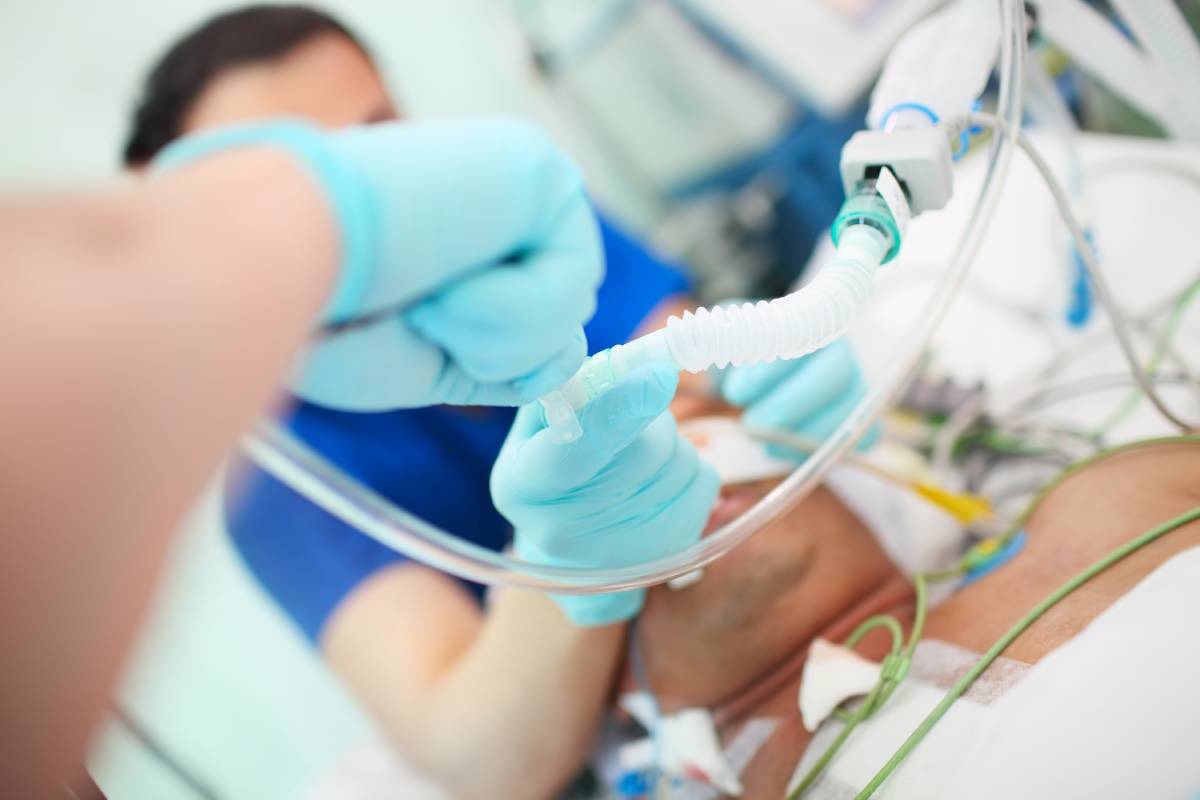Mechanical ventilation has long been used to aid in the survival of patients needing respiratory support, but mortality rates are still high. The goal of mechanical ventilation is to provide oxygen to the lungs, remove carbon dioxide from the lungs and provide enough pressure to keep the alveoli from collapsing. Mechanical ventilation is employed for patients with acute respiratory disease syndrome, during general anesthesia, medical emergencies, and in cases of CNS injury or aspiration. However, mechanical ventilation can lead to ventilator-induced lung injury by placing the lungs at increased risk for overdistention (Plataki & Hubmayr, 2014). Some strategies employed to prevent ventilator associated lung injury include limiting tidal volume and applying positive end expiratory pressure (PEEP). Monitoring esophageal pressure may also improve mechanical ventilation and prevent adverse outcomes (Akoumianaki et al., 2014).
While esophageal pressure can be useful in critically ill patients on mechanical ventilation, it is not used widely for management of PEEP in the clinical sphere. Some reasons may include issues inserting and placing a catheter and obtaining and interpreting measurements (Akoumianaki et al., 2014). Uncalibrated esophageal pressure can overestimate the calibrated values at both end-expiration and end-inspiration. A study performed in 30 adult patients scheduled for elective pelvic robotic surgery found this gap to be clinically relevant and potentially harmful in 30-50% of cases (Cammarota, et al., 2020). A catheter-balloon system is the most common technique for measuring esophageal pressure. While the most common esophageal catheters accurately measure surrounding pressures, the catheters all had different optimal filling volumes (Mauri, et al., 2016). It is necessary that clinical staff adjust to these technical issues.
Most research on esophageal pressure as a tool to guide mechanical ventilation and PEEP have been completed in healthy patients, so this technique has not been studied extensively in patients requiring critical care. A randomized clinical trial randomly assigned patients with acute lung injury or ARDS to undergo mechanical ventilation with PEEP adjusted according to measurements of esophageal pressure, then compared the study group to patients managed with the Acute Respiratory Distress Syndrome Network standard-of-care recommendations. A ventilator strategy using esophageal pressures to estimate transpulmonary pressure had a fraction of inspired oxygen at 72 hours that was 88 mm Hg higher than the control group (Talmor et al., 2104). The esophageal pressure-guided group also had improved 28-day survival. They likely had improved outcomes because they were able to avoid alveolar collapse or overdistension.
However, a subsequent multicenter randomized trial comparing esophageal pressure-guided PEEP titration versus an empirical high PEEP-FiO2 titration table found that the primary composite end point was not significantly different between the two treatment groups. Notably, the previous single center study from 2014 used a less aggressive empirical PEEP strategy which may have resulted in different transpulmonary pressures across both groups (Beitler et al., 2019). Another study shows that the effects of esophageal pressure-guided PEEP, compared with empirical high PEEP, vary based on multiorgan dysfunction severity in patients. Esophageal pressure guided-PEEP was associated with increased survival for patients with less severe extrapulmonary organ dysfunction (Sarge et al., 2021).
Ultimately, esophageal pressure monitoring to guide mechanical ventilation PEEP is somewhat promising. This tool can personalize medicine especially for patients with complex medical needs. Other aspects of esophageal pressure measurements that need further testing involves quantitative measurements of chest wall properties, prone positioning as rescue therapy, and multiorgan dysfunction severity. (Beitler et al., 2019), (Mauri, et al., 2016).
References
1. Akoumianaki E, Maggiore SM, Valenza F, et al. The application of esophageal pressure measurement in patients with respiratory failure. Am J Respir Crit Care Med. 2014;189(5):520-531. doi:10.1164/rccm.201312-2193CI
2. Beitler JR, Sarge T, Banner-Goodspeed VM, et al. Effect of Titrating Positive End-Expiratory Pressure (PEEP) With an Esophageal Pressure-Guided Strategy vs an Empirical High PEEP-Fio2 Strategy on Death and Days Free From Mechanical Ventilation Among Patients With Acute Respiratory Distress Syndrome: A Randomized Clinical Trial. JAMA. 2019;321(9):846-857. doi:10.1001/jama.2019.0555
3. Cammarota G, Lauro G, Santangelo E, et al. Mechanical Ventilation Guided by Uncalibrated Esophageal Pressure May Be Potentially Harmful. Anesthesiology. 2020;133(1):145-153. doi:10.1097/ALN.0000000000003327
4. Mauri T, Yoshida T, Bellani G, et al. Esophageal and transpulmonary pressure in the clinical setting: meaning, usefulness and perspectives. Intensive Care Med. 2016;42(9):1360-1373. doi:10.1007/s00134-016-4400-x
5. Plataki M, Hubmayr RD. Should mechanical ventilation be guided by esophageal pressure measurements?. Curr Opin Crit Care. 2011;17(3):275-280. doi:10.1097/MCC.0b013e328344dda6
6. Talmor D, Sarge T, Malhotra A, et al. Mechanical ventilation guided by esophageal pressure in acute lung injury. N Engl J Med. 2008;359(20):2095-2104. doi:10.1056/NEJMoa0708638
7. Sarge T, Baedorf-Kassis E, Banner-Goodspeed V, et al. Effect of Esophageal Pressure-guided Positive End-Expiratory Pressure on Survival from Acute Respiratory Distress Syndrome: A Risk-based and Mechanistic Reanalysis of the EPVent-2 Trial. Am J Respir Crit Care Med. 2021;204(10):1153-1163. doi:10.1164/rccm.202009-3539OC
